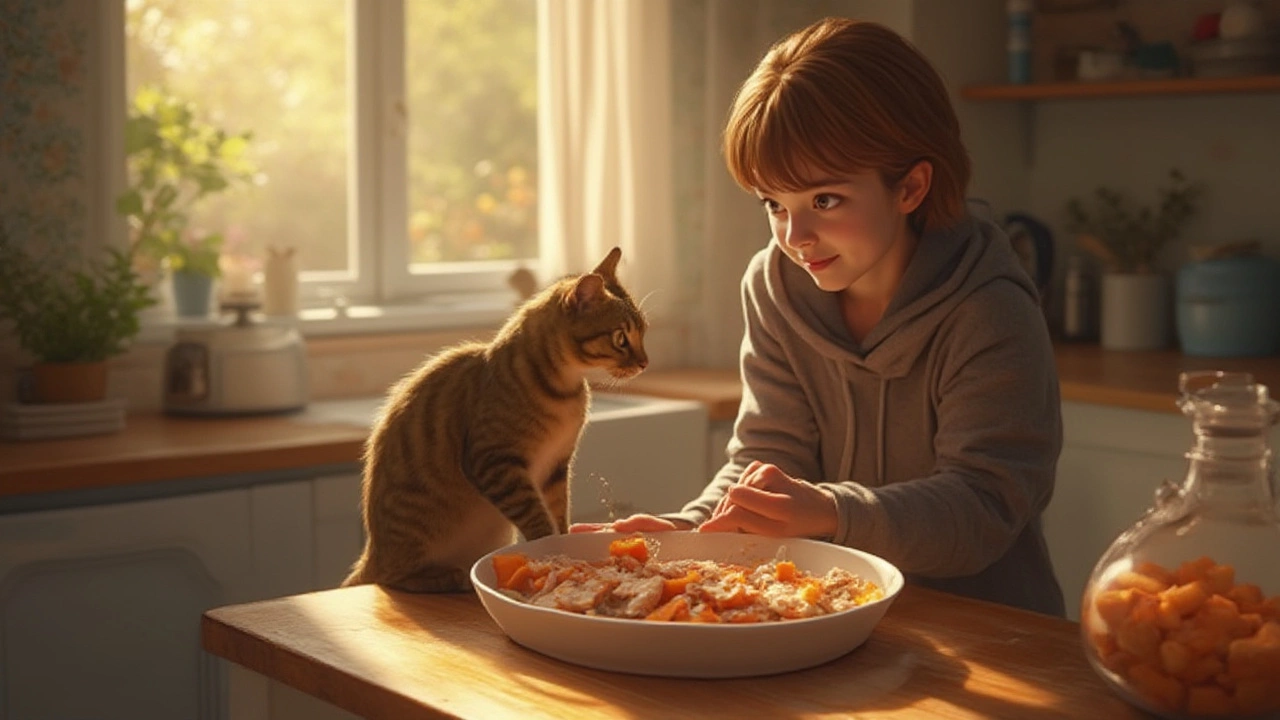Starving Cat? How to Spot Hunger and Feed Right Now
Ever walked into the kitchen and found your cat staring at you with those big, pleading eyes? It can feel like a tiny heart attack, especially if your furry friend looks gaunt or is constantly begging for food. Before you panic, let’s figure out what’s really going on and how to fix it fast.
Why Is My Cat Acting Hungry?
First, understand that a “starving cat” isn’t always about food scarcity. Health issues like hyperthyroidism, parasites, or dental pain can make a cat act like it never ate. Stress, a sudden change in routine, or a new pet in the house can also boost appetite. Keep an eye on weight loss, vomiting, or changes in litter box habits—those clues tell you if a vet visit is needed.
If the vet clears any medical problems, the hunger is likely genuine. Cats are obligate carnivores, meaning they need meat to thrive. Low‑quality kibble that’s mostly filler can leave them wanting more. That’s why many owners switch to a mix of wet and dry food or try higher‑protein options.
Best Food Choices for a Hungry Cat
When you’re dealing with a cat that’s constantly begging, the first step is to check the food label. Look for real meat as the first ingredient and at least 30% protein. Wet food has the added benefit of extra moisture, which helps kidneys and keeps cats feeling fuller.
Here’s a quick comparison:
- Wet vs Dry Cat Food: Wet food usually has 8‑10% water, higher protein, and fewer carbs. Dry food is convenient and helps keep teeth clean but can be less satisfying.
- Portion Timing: Offer smaller meals 3‑4 times a day instead of one big bowl. This mimics a cat’s natural hunting pattern and prevents overeating.
- Healthy Add‑Ons: A spoonful of cooked chicken, a bit of plain pumpkin, or a sprinkle of freeze‑dried fish can boost flavor without excess calories.
Don’t forget to keep fresh water available at all times—especially if you’re serving more dry kibble.
If you’re looking for a specific brand, check out our top picks for 2025: high‑protein wet cans, grain‑free dry kibble, and limited‑ingredient recipes that avoid common allergens.
Finally, control the environment. Feed your cat in a quiet spot away from other pets, and use puzzle feeders to slow down eating. This not only makes meals more fun but also helps your cat feel satisfied longer.
Feeling stuck? Try swapping half the kibble for a premium wet option for a week and monitor weight and behavior. If the begging stops, you’ve likely found the right balance.
Remember, a truly starving cat is a health emergency. Quick vet checks, proper protein, and smart feeding schedules will keep your cat happy, healthy, and less likely to stare at your plate.

Best Cat Food Options for Starving Felines: Nutrient-Rich Choices and Care Tips
Find out the best foods to give a starving cat, why nutrition timing matters, and how to support recovery. Get expert tips from a cat-loving Kiwi mum.
View more